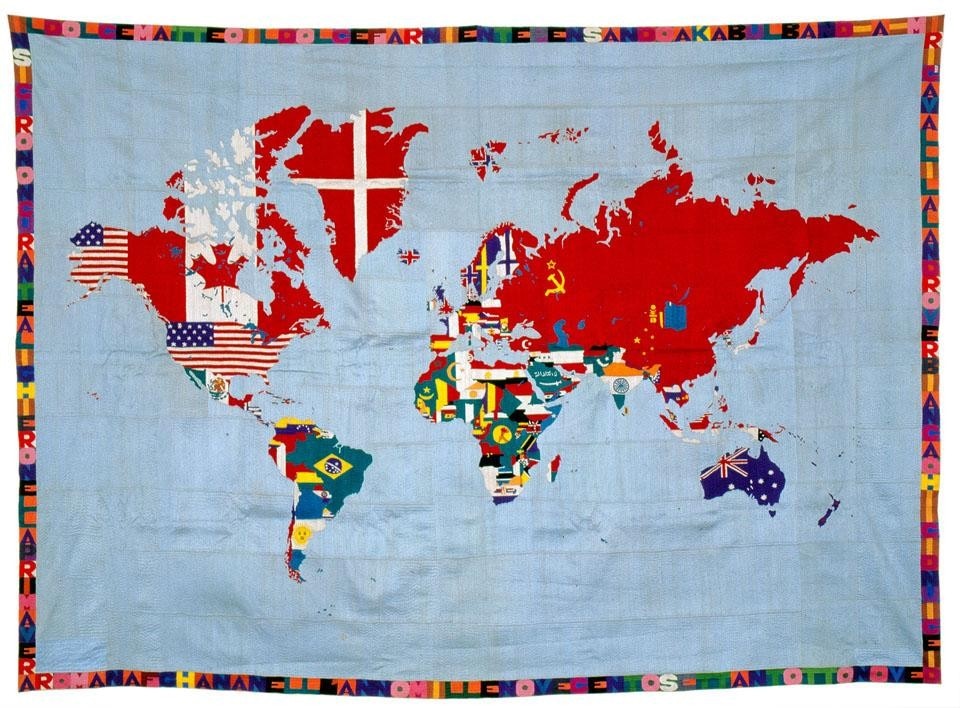An Afghan war rug and one of Alighiero Boetti's famous maps might be deemed the most successful combination, in which you can sense the link. Boetti's maps were a conceptual rereading of the world's political organisation, entrusted to the hands of Afghan embroiderers. The war rugs, first woven after the 1979 Russian invasion to narrate its events, marked a break away from classical design patterns. Both produced in the same country with traditional craft methods, they are examples of creative innovation. In those years, Afghanistan was a draw for young hippies and Boetti opened the One Hotel in Kabul. Who knows, perhaps those very exchanges between East and West—between young people looking for new ways to approach the world and a society that although backward was more open than the one seen later when the Taliban rose to power—were behind that break.
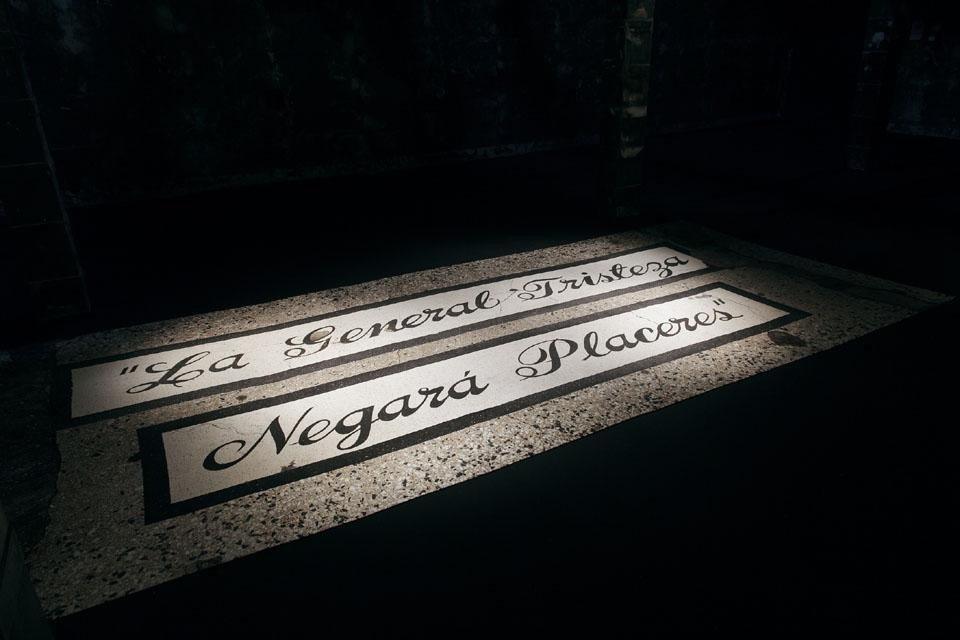
Above: Carlos Garaicoa, Fin de Silencio, 2010. Installation of 5 tapestries and 2 video projections, variable dimensions, wool, cotton and metallic thread. Woven by Flanders Tapestries from files prepared by Factum Arte. Lent by the artist and Galeria Continua.
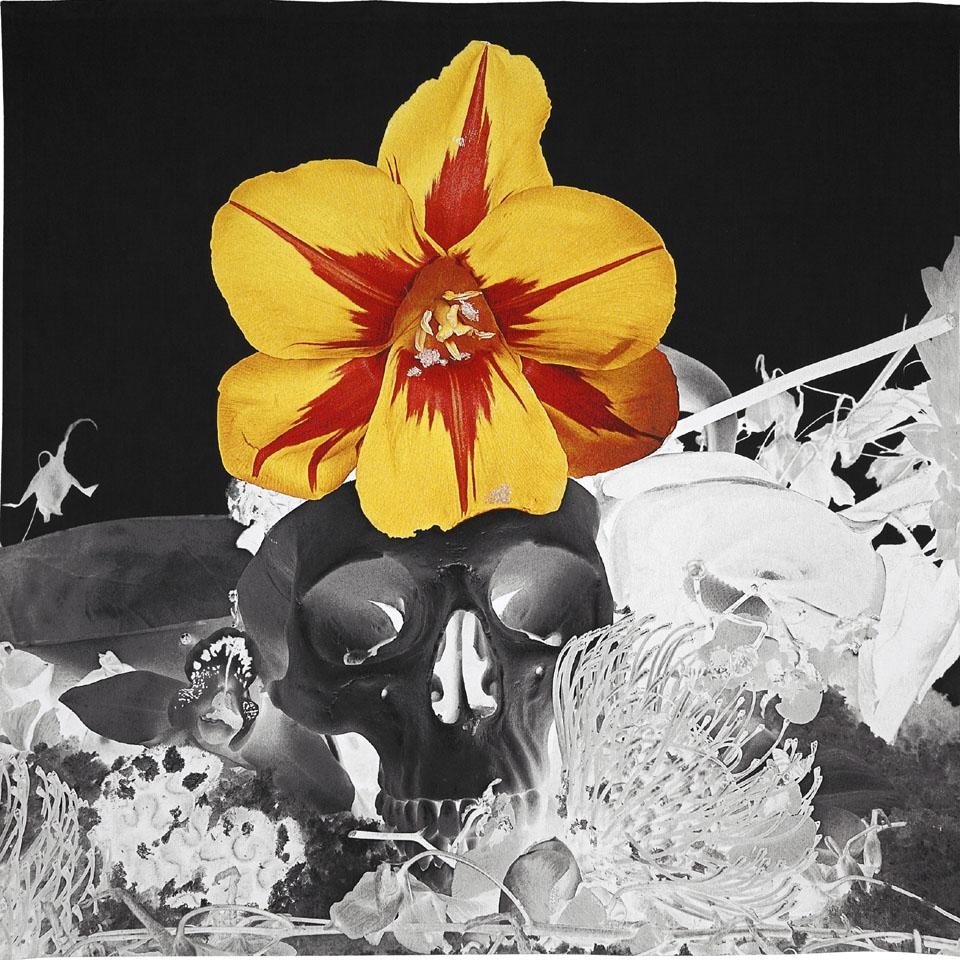
Although all the pieces on display are worthy in themselves, the cross-reference between old and new seems more an impression than an actual dialogue between the pieces.
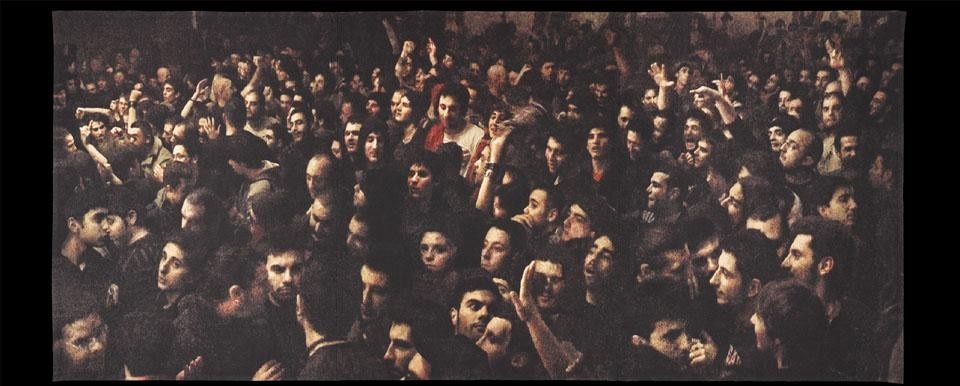
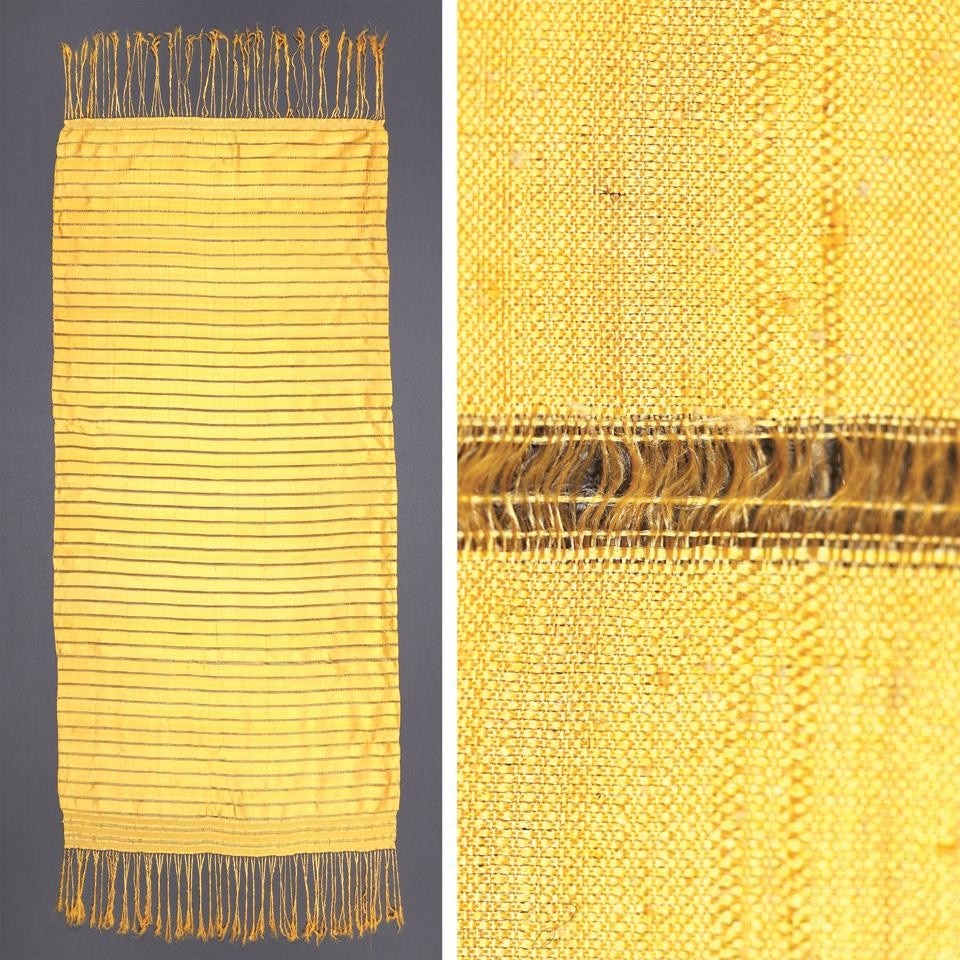
The beautiful and serene venue is also one of the merits of this exhibition.
Simona Bordone
through 18.09.11
Fondazione Giorgio Cini
Isola di San Giorgio Maggiore
Venice

